Crawl spaces are areas of the home that, while not used as often as living spaces, do serve an important function in keeping your home structurally sound. The health of a crawl space can be a reflection of your home’s structural integrity as a whole. This means that if you have a crawl space problem, you also have a more pressing, general issue going on within the home.
That said, it’s hard to tell for certain when there’s an actual issue going on in your crawl space or if it just needs some extra cleaning and TLC. In this article, we’ll be going through five of the most major signs that you have a real issue in your crawl space, including actionable ways to deal with that problem once it makes itself known.
Why Having Healthy Crawl Spaces is Important

Crawl spaces are often overlooked, but what happens inside of them has an undeniable impact on the rest of the home.
©karenfoleyphotography/iStock via Getty Images
As we stated, crawl spaces are vital to your home’s foundation. That’s because your crawl spaces make a significant impact on things like air quality, energy efficiency, and even your home’s value.
When you neglect crawl space problems, the effects can be much worse than you realize. It will cause damage to your home, but it could also go as far as causing problems with your health. Your crawl space is linked to the rest of your indoor environment, mostly due to something called the stack effect. The stack effect is the act of air in a building always moving upwards. When air from a damaged crawl space moves upwards, it moves the mold, odors, and contaminants right up with it. These conditions can accumulate over time into respiratory conditions or other health problems among you and those whom you share your home with.
If the health problems aren’t enough to worry about, then maybe you’ll care about the damage these issues can do to your pockets. You see, your crawl space can influence the energy emissions of your home greatly. If you have wet or damaged insulation, for instance, your heating systems will need to work much harder, and your utility bills can skyrocket. The damage that your crawl space problem will inevitably cause over time will depreciate the value of your property, too. If you have plans to resell or market the property, these issues must first be dealt with. Even if you aren’t selling, do you want to live in a home that has things like mold and pests?
Signs That You Might Have a Crawl Space Problem
It should be noted that there is no singular way to tell if you have a crawl space problem on your hands. None of the following signs or signifiers is inherently more viable than the rest, so if you notice one or more of any of these things, it’s advisable to have a professional take a look. Some signs aren’t listed that could indicate something is awry. Above all else, it’s important to listen to your gut in these matters. As they say, it’s better to be safe than to be sorry!
1. Foul or Odd Odors

If something smells like there’s an issue, then there very well could be one.
©AaronAmat/iStock via Getty Images
The first indicator of a greater crawl space problem is scent. If it smells like something’s up, generally speaking, then there probably is. Musty odors are one of the first (and most noticeable) signs of a looming issue. This kind of smell is usually synonymous with mold and mildew, which thrive in damp, dark, and poorly ventilated areas. These conditions, of course, are commonly associated with neglected crawl spaces. Not only is it a smell-related inconvenience, but it can also pose some serious health risks. This is especially so for people with pre-existing respiratory or allergenic conditions.
Here are some of the most likely reasons for the nasty scent:
- Moisture Accumulation: The smell could be from water intrusion sourced from leaks, flooding, or condensation. This creates a conducive environment for mold, mildew, and subsequent odors.
- Poor Ventilation: When you have inadequate airflow, there can be an increase in stagnant and humid air. This, in turn, fosters the development of smelly issues.
- Organic Material Decay: When organic materials like wood, leaves, or animal poop build up in a crawl space, these things can decay and produce some pretty hefty odors.
- Infestations: Gross smells can accumulate due to infestations of rodents, insects, or other pests. This could be from their waste or their decomposition.
2. Presence of Mold
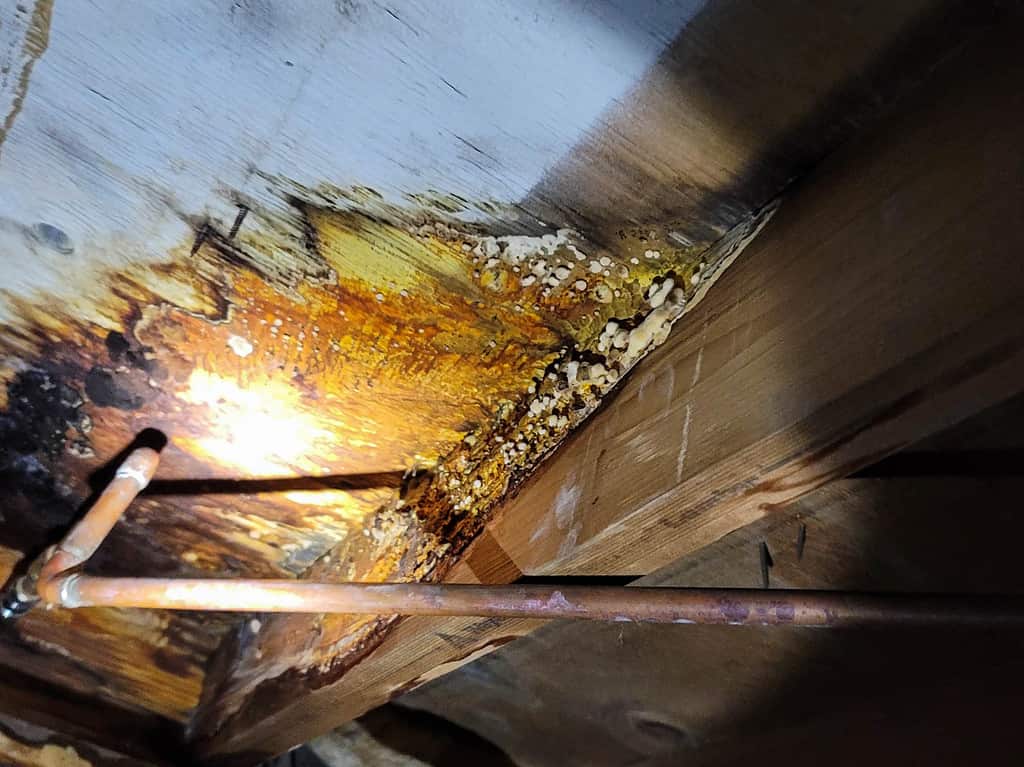
If you spot mold in your crawl space, that’s a problem that should be handled immediately.
©Ethen Dell/iStock via Getty Images
So, let’s say you decide to take a peak into that foul-smelling crawl space and realize that there’s a substantial amount of fungi growing. This is a serious cause for concern because this mold can cause you and your home irreversible damage if left unattended. This mold will usually appear in patches or spots on any surface of the crawl space.
What causes this mold and mildew to accumulate? Well, it’s a combination of several factors. Firstly, excess moisture from leaks or poor drainage can be a cause. When this is coupled with poor airflow, the conditions for mold to grow are pretty ideal.
Mold must be addressed as soon as you find out this crawl space problem exists. That’s because you could develop symptoms like wheezing, rashes, or even mycotoxin exposure. Mycotoxins are produced by some types of mold, and when they’re inhaled or ingested, they can cause severe bodily damage.
3. Pest Infestation Signifiers
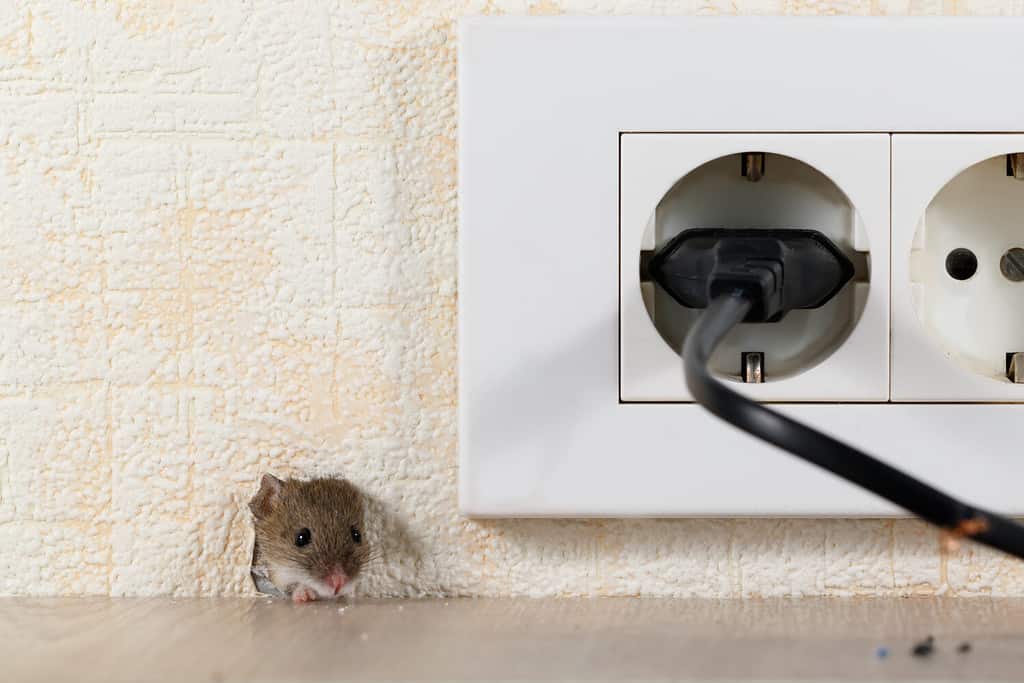
Hear some unexplained rattling, and find some chewed-up wire? You might have a pest infestation on your hands.
©torook/Shutterstock.com
Pests are another crawl space problem that you might find yourself needing to worry about. The environment of crawl spaces is pretty ideal for many kinds of pests because of their secluded, damp nature. Several secondary issues can emerge from infestations, so you should take care of the problem as soon as possible.
Some of the most common signs that you’re experiencing an infestation are running into droppings or feces, hearing scratching, rustling, and other sounds of movement, or noticing some interesting damage to insulation and wiring in the form of bites and nibbles. Of course, the most obvious indicator of an infestation is seeing the pests around your home (alive or dead), but if you notice more than one of the other signs, that could also be a safe tell that you’re dealing with a deep issue.
Here are some of the most common pests found in crawl spaces:
- Rodents: Mice and rats love to seek shelter in tiny, dark spaces. They can cause some pretty substantial damage to the home by gnawing through important structural elements like wires.
- Termites: These nasty insects consume wood and, through doing so, can inadvertently destroy essential parts of your home’s structure.
- Cockroaches: These insects love damp environments and will often set up shop in your crawl space before going out on the hunt for food.
- Spiders: While less of an issue than other creatures, spiders will sometimes infest crawl spaces to get a better opportunity to hunt smaller insects.
4. Damp Insulation
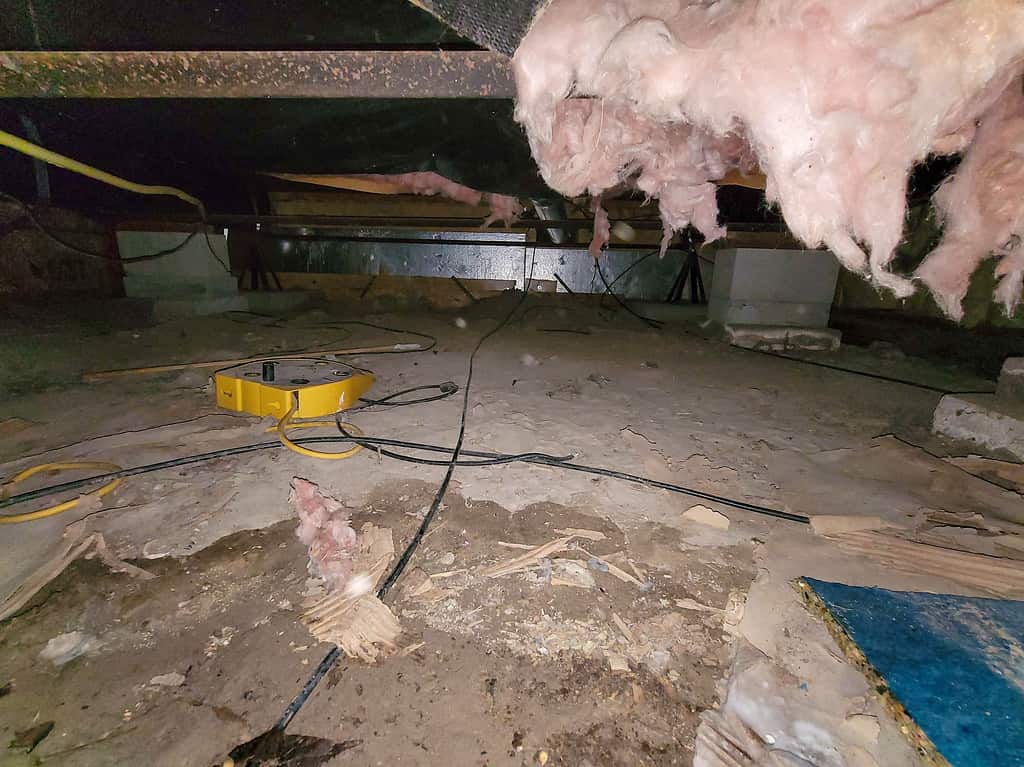
Making sure that your insulation is kept dry is imperative for having a temperature-controlled space.
©Ethen Dell/iStock via Getty Images
Insulation serves several functions within the home. It is especially essential in its role in energy regulation and maintaining a stable temperature. When this insulation becomes damp or wet, though, it loses its effectiveness and can become a breeding ground for mold and other crawl space problems.
The presence of damp insulation suggests the bigger issue of water infiltration. You should focus on figuring out the source of the moisture and how it got into your home in the first place if you want to avoid further complications and damage. No one wants a home that has high energy consumption (and, of course, the high bills that come with it). You need to keep your insulation dry so the flow of heat is resisted and temperatures are kept at a solid level.
5. Settlement Issues
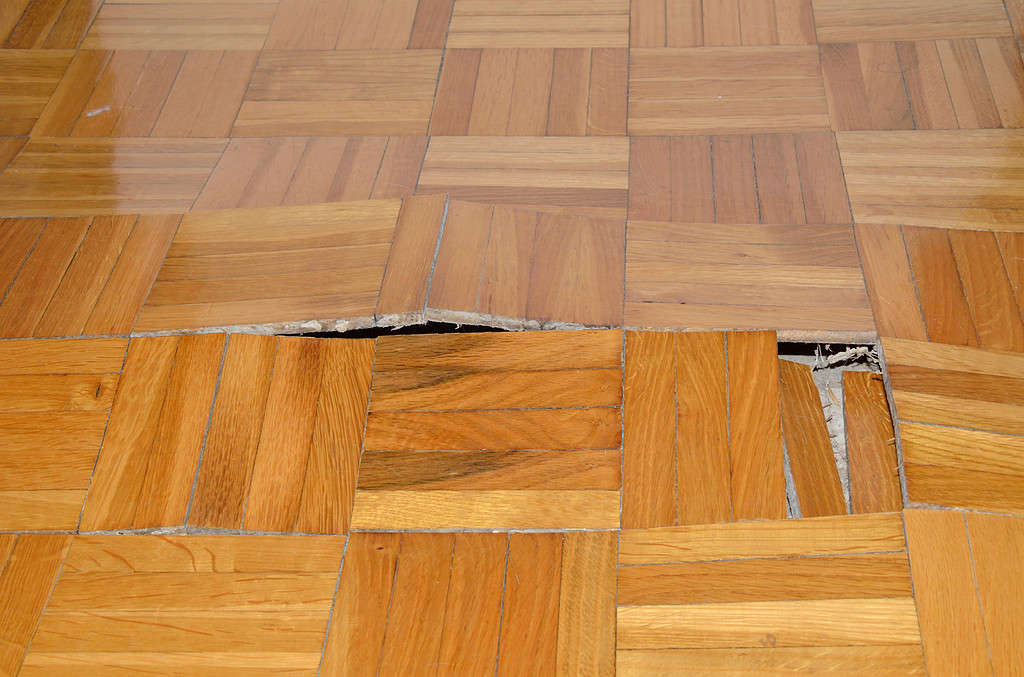
You might not think these two issues can go together, but settlement problems can actually emerge from issues within your crawl space.
©Banepx/iStock via Getty Images
When you’re dealing with very severe crawl space problems, they can grow into larger issues like cracked, damaged foundations. In these instances, early intervention is crucial in order to preserve the safety of the home. There are various forms that foundation issues can present themselves in throughout your home, including:
- Visible Cracks: An indicator of foundation movement can be cracks appearing in the walls or floors of your home.
- Sticking Windows or Doors: Doors and windows can become misaligned when there is a shift in the foundation.
- Uneven Floors: A sign that the foundation is sinking can be in the form of a sloping/uneven floor.
- Gaps around Window Frames: When there’s a gap around the frame of your window or even on exterior doors, this can stem from crawl space problems and foundation movement.
How do these problems relate back to your crawl space, though? Well, the weakening of wooden structural elements can impact your foundation. This could be a result of damp crawl spaces that are bringing in excess water. Expansive soils can also lead to an uneven foundation settlement, and poorly compacted ones can cause sinking. Crawl spaces with an inadequate amount of support columns can also lead the structure above to begin sagging or otherwise settling.
Steps to Address These Issues
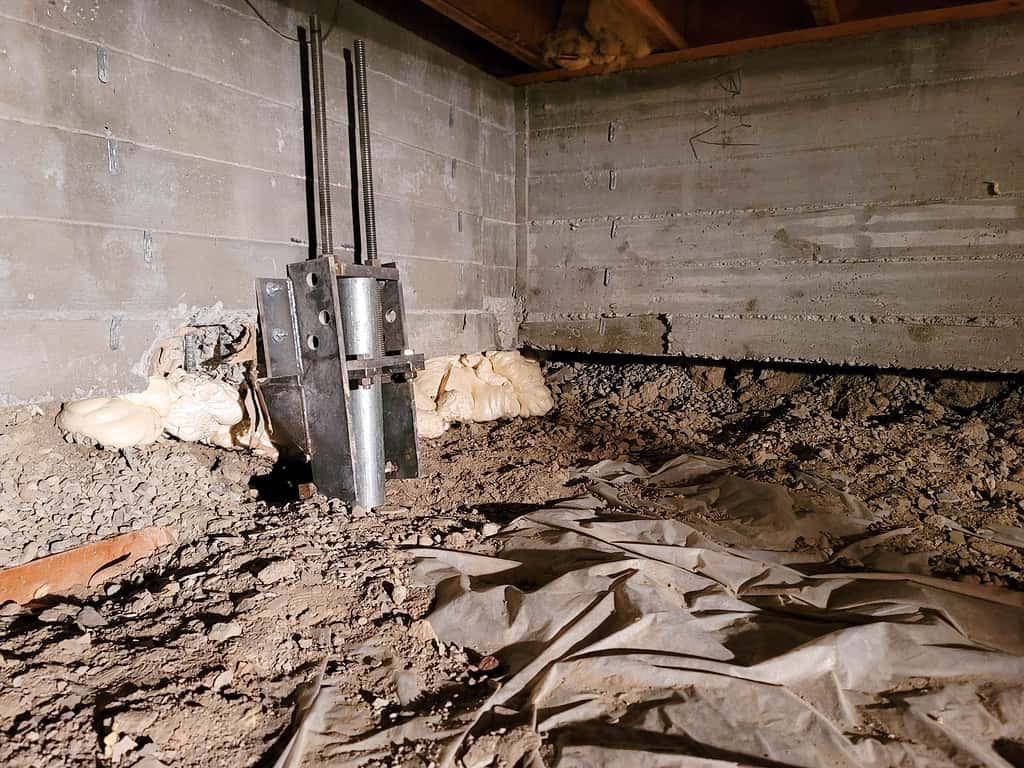
Neglecting your crawl space could end up costing you thousands in repairs, especially to your foundation.
©Ethen Dell/iStock via Getty Images
Once you’ve identified your crawl space problem, you have to act fast. If you don’t, you run the risk of more problems presenting themselves. Firstly, engaging professionals to inspect your space is crucial. It allows for an assessment of the damage that is undoubtedly going to be more thorough than what you can provide at a glance. Once they let you know the root issue, you can work from there. Plus, getting a professional inspection prevents the possibility of you misidentifying the problem and having it worsen over time.
But, of course, the best solution is always prevention. There are a few steps that you can take in implementing preventative strategies. Firstly, you can use encapsulation to isolate the space from any ground moisture. This, as well as installing vapor barriers, is a great way to prevent the area from reaching grossly damp conditions. In a pinch, you can even add in some dehumidifiers to help with condensation.
Truly, though, the best measure is regular inspections. When you get your crawl space inspected periodically, you can make sure that there are no emerging problems. This is especially recommended for crawl spaces that have had issues in the past. If there are no pressing matters, great! If there are, then you know that you can handle these emerging issues as they come.
The photo featured at the top of this post is © Kurteev Gennadii/Shutterstock.com
Thank you for reading! Have some feedback for us? Contact the AZ Animals editorial team.







